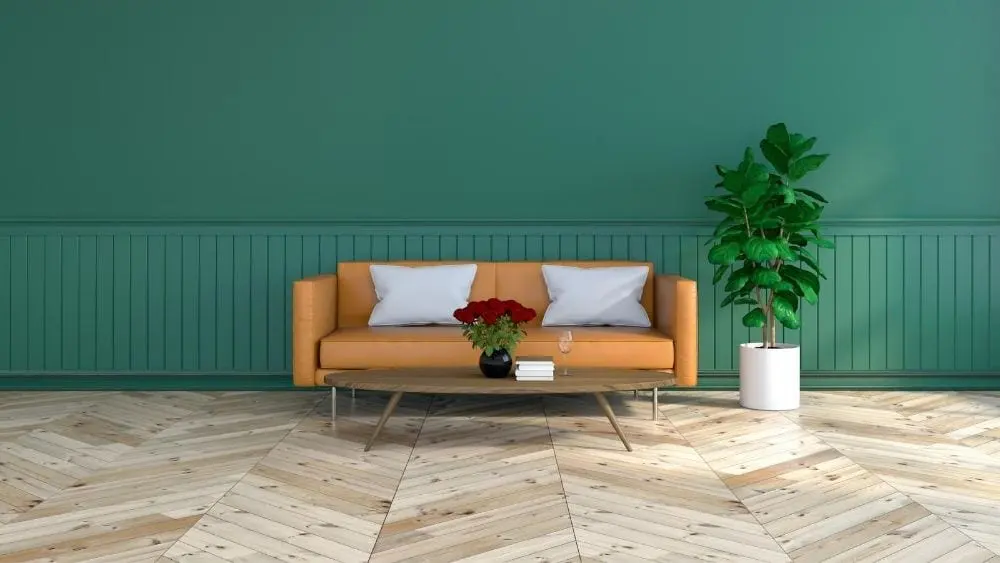
Energy efficiency is serious business for new home buyers. The National Association of Home Builders found last year that the average home buyer will pay an additional $8,728 upfront on a home in order to save $1,000 a year in utility bills.
While much has been made of the value of energy-efficient lighting, insulation, windows, and appliances, savvy new home buyers would be wise to also pay attention to what’s underfoot. That’s because your flooring choices can also contribute to a more energy-efficient home. Here are some energy-efficient flooring options to consider in your new home.
Stone and Tile
When it comes to flooring choices, going natural is not only eco-friendly, but it can also save on energy bills. These products absorb heat during the daytime and release it slowly during the cooler evening hours to keep your home warmer. “Conversely in the summer and in hot climates,” says tile and stone supplier Tile Warehouse, “tiles shielded from the sun will stay cool longer and can actually help lower air-conditioning costs.”
“Natural stone or ceramic tile may feel cold to the touch in winter,” adds Loudon Valley Floors in Virginia, “but they conduct heat and are more energy efficient than you might think. Ceramic works especially well with radiant heat sources within the floor.”
Carpet’s Plush Benefits
Especially in chillier climates, a warm bed of carpeting helps insulate your home from the cold foundation underneath. And let’s face it – there’s nothing like stepping out of bed on a wintry morning onto a warm, soft rug.
“Carpet has a low thermal conductivity, which makes it act like a heat insulator and keeps heat in the room,” said Matt Daigle, CEO and founder of Rise, in a recent article for Save On Energy. “Carpet is a great choice for downstairs areas or drafty rooms where the heat would otherwise escape.”
Wood Floors Increase your Comfort Level
Another natural product, wood floors are hard to beat for energy efficiency. Why? Because hardwood floors’ tough exterior mean they absorb heat well and keep heat from penetrating into your home. As a result, wood floors help homes stay warmer in cold months and cooler in the summer. To get the most energy efficiency from your wood floor, ask your builder about the best wood types and thickness for your area’s climate. Since heat can rise through gaps in a poorly installed subfloor and floor covering, be sure to rely only on an experienced wood flooring installer.
Radiant Floors
Currently, there are two types of radiant, or heated, floors: electric and water-based systems. Both provide significant energy-saving potential.
“Radiant floor heating systems are generally much more energy efficient than more conventional heating systems,” noted Daigle. “The lower temperature requirement, especially when combined with thermal mass in the floor, can allow for much lower energy bills.”
But if you are considering installing radiant floors, carefully consider the type of floor covering you’ll use. While radiant floors work great with tile, their heat can damage certain types of wood floors.
Underfloor Insulation
Even with well-insulated carpeting, you might want to consider an extra layer of protection by adding underfloor insulation. This is especially valuable in garages and basements, and other areas of your home susceptible to drafts. That said, many builders today incorporate polystyrene insulation just below the concrete floor surface to reduce heat loss in new home construction. Ask your builder about underfloor insulation options, and rely on a flooring expert for installation. A botched job can lead to moisture penetration issues, which can quickly lead to costly repairs.
Flooring might not be the first place you think of to lower energy bills in your new home. But don’t overlook the contribution that the right flooring choices can make to a comfortable, energy-efficient home environment.

Freelance writer and marketer Sue Durio has been writing about construction, design and related products for more than 18 years.
 Best Landscaping Companies in Austin: 2021 Edition
Best Landscaping Companies in Austin: 2021 Edition